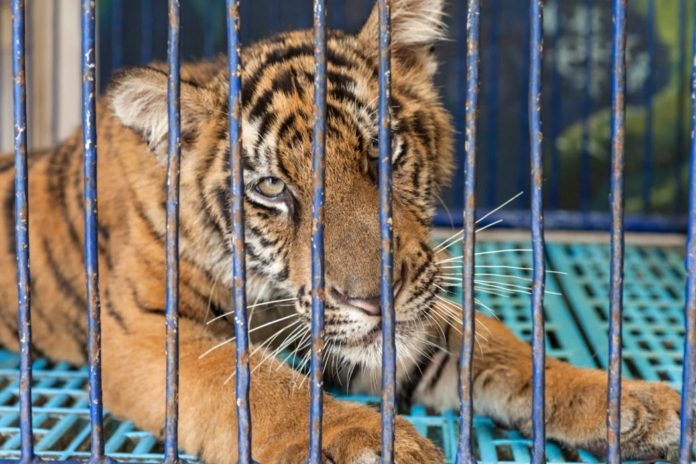Animal abuse is one of the most practiced crimes to date. Although many believe that animals are safest in America and in other parts of the Western world, where animal rights are a conceivable concept as well as a full fledged federal crime in most areas, animal abuse is still an under regulated issue, and a problem that still takes millions of lives annually. Although the fight for animal rights has gained momentum, following not only an increase in vegetarian eaters in the past three years, as well as legislation designed to protect animals, there is still many complexities to the issues left unaddressed.
Here are 10 facts that you didn’t know about animal abuse.
1. Animal cruelty has a strong correlation to domestic violence
According to the humane society, 71% of domestic violence victims report that their abusers also targeted their pets.
2. Animal hoarding is a form of animal cruelty that often has little to no consequences
It’s been estimated that there are 900 to 2,000 new cases every year of animal hoarding in the US, involving over 250,000 animals. The victims of animal hoarding often suffer from severe mental and emotional trauma, yet their abusers often face no criminal charges. At the very most, such individuals are barred from ever being able to house animals, but otherwise evade serious charges. Many of the perpetrators also have moderate to severe psychological disorders, making it difficult to criminalize animal hoarding on a federal level.
3. Abusers use dog and cock fighting to fund illicit activities
The U.S. Drug Enforcement Agency has documented a number of instances where drug cartels carried out animal fights to fund illegal narcotic operations.
4. More tigers and other exotic animals are kept as pets than they exist in the wild
According to Born Free USA, it is estimated that between 5,000 and 7,000 tigers are kept as “pets,” which is a significantly higher number than their populations in the wild. Even more alarmingly, a tiger can be purchased for as little as $300, or less than the cost of a purebred dog.
Many of these animals are unfortunately euthanized or abandoned as they reach adulthood, due to behavioral issues, lack of space, or governmental confiscation.
5. Circuses almost always violate animal welfare laws and safety protocol
According to researchers at DoSomething.org, every major circus has been cited for violating the minimal standards of care set by the United States Animal Welfare. Many of these institutions have been heavily fined, and some were subjected to the forceful removal of their animals. However circuses previously found guilty of such crimes do not always retire their animal acts. Many either rebrand themselves, re-locate, or acquire new animals before cropping up again as virtually the same business.
6. Race dogs often die due to overbreeding and grueling training
Although competitive racing is not illegal, thousands of greyhounds die each year before they ever become competitors. The dogs that do reach maturation often do not survive pasted the normal “retirement” age of 4 or 5 due to cardiac issues, and varying degrees of musculoskeletal injuries that are not only painful but are sometimes fatal.
7. Millions of puppies die due to the puppy-mill industry
According to Dosomething.org, it is estimated that about 2.11 million puppies sold in the U.S. originated from puppy mills. An additional 3 million are killed in shelters due to a lack of space and eligible adopters. Puppy mills are also highly unsanitary, over crowded, and are sometimes referred to as “legal hoarding houses.” Female dogs are also overbred, and either die during a stressful labor or of diseases caused by baring too many puppies, such as uterine and ovarian cancer.
8. Cows farmed for milk die of complications due to excessive milking
Approximately 30-50% of heifers–or female cows– suffer from mastitis, which is an infection of the udders that causes swelling and makes milking excruciating. Mastitis is almost always a result of hormonal manipulation, which induces the overproduction of milk.
9. Turkeys and chickens are exempt from federal humane slaughter laws
Because they are exempt from laws designed to make the killing of livestock more humane, it is not required to stun them before they are killed. Some are still alive when they are submerged in the scalding tank in order to remove their feathers quickly and “efficiently.” Over 180 million chickens suffer each year due to a botched slaughterhouse death.
10. Animal Cruelty goes beyond inhumane slaughtering practices
Workers in Arkansas slaughterhouse were documented punching and stomping on live turkeys and slamming them against the walls for sport. Similar instances have been reported at other Slaughterhouses– including renowned Tyson Poultry farms–where workers were recorded peeing on, sodomizing, and causing bodily harm to live animals.










